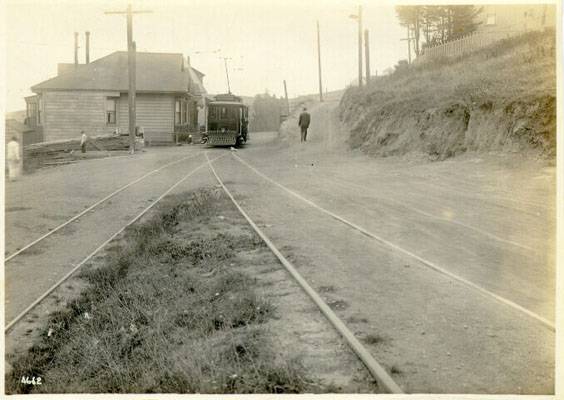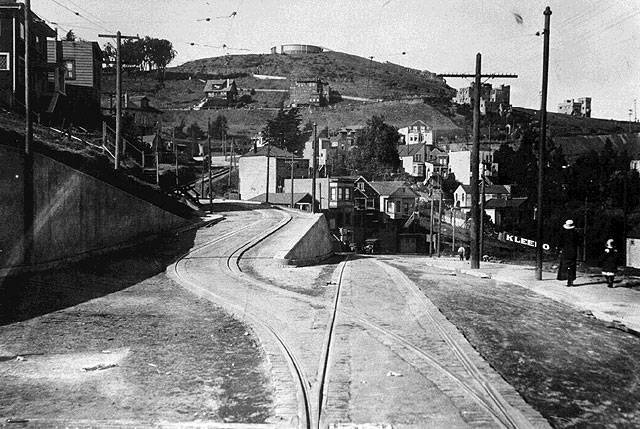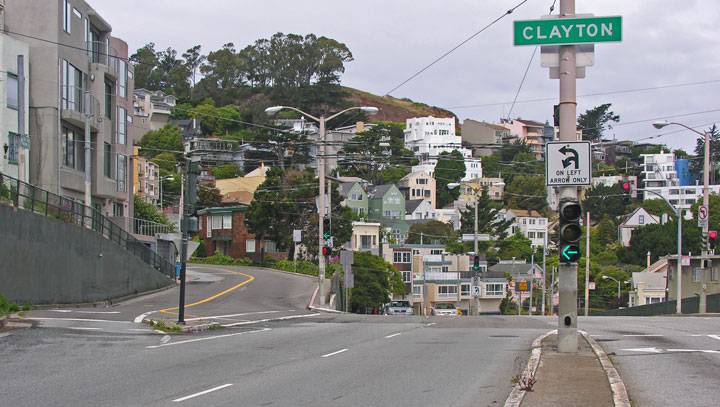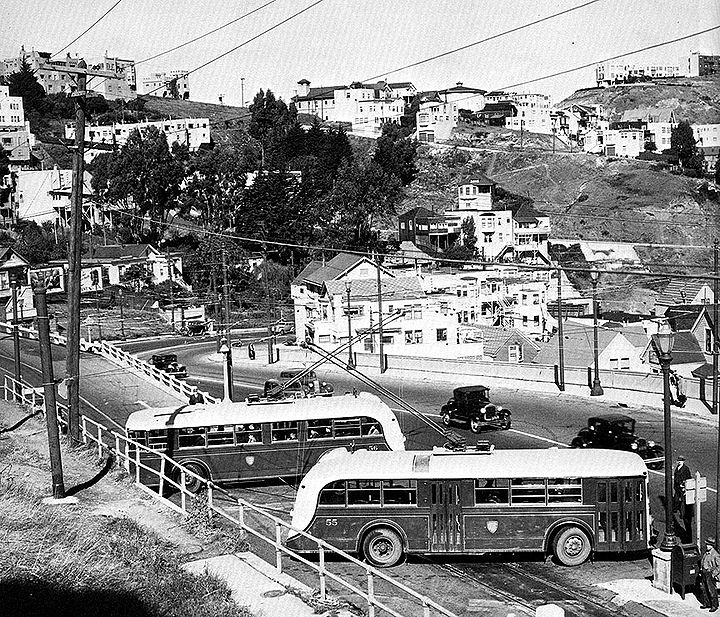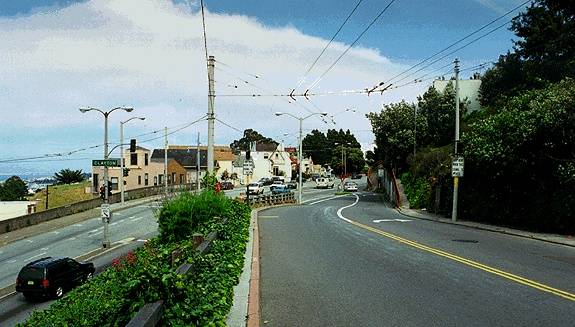Clayton-Market Switchback: Difference between revisions
fixed photo going off side |
added new library photo |
||
| Line 1: | Line 1: | ||
'''<font face = arial light> <font color = maroon> <font size = 3>Unfinished History</font></font> </font>''' | '''<font face = arial light> <font color = maroon> <font size = 3>Unfinished History</font></font> </font>''' | ||
[[Image:Market Street Extension, original condition at switchback, Mono and Caselli 1921 AAB-6185.jpg]] | |||
'''Market Street switchback at Mono and Caselli and Clayton, 1921.''' | |||
''Photo: San Francisco History Center, SF Public Library'' | |||
| Line 6: | Line 12: | ||
'''Market and Clayton switchback, c. 1919''' | '''Market and Clayton switchback, c. 1919''' | ||
''Photo: | ''Photo: private collector'' | ||
This sharp turn from Clayton to Market was not negotiable by early streetcars so operators would "switch" the backs of the passenger seats at Market Street, thereby "switching" the streetcar in the reverse direction. | This sharp turn from Clayton to Market was not negotiable by early streetcars so operators would "switch" the backs of the passenger seats at Market Street, thereby "switching" the streetcar in the reverse direction. | ||
Revision as of 17:41, 30 September 2013
Unfinished History
Market Street switchback at Mono and Caselli and Clayton, 1921.
Photo: San Francisco History Center, SF Public Library
Market and Clayton switchback, c. 1919
Photo: private collector
This sharp turn from Clayton to Market was not negotiable by early streetcars so operators would "switch" the backs of the passenger seats at Market Street, thereby "switching" the streetcar in the reverse direction.
May 2010 - Looking down Market Street at Clayton
Photo: Michael Greene, San Francisco, CA
The 33 streetcar maneuvers around a Ford motorcar around 1920.
Electrified buses replace the old streetcars by the late 1930s.
1998
Photo: Chris Carlsson

